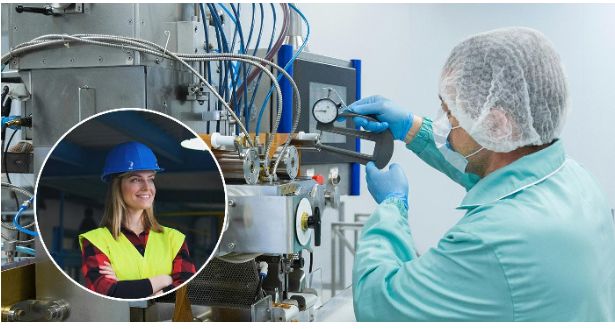Emergency showers – a must in risky environments

Emergency showers are crucial for safety at workplaces where the risk of accidents with hazardous substances is high. They offer an immediate solution to reduce damage when coming into contact with chemicals, combustibles or other hazardous materials. A well-placed and functional emergency shower can be the difference between a minor annoyance and long-term injury or even death.
What is a hazardous environment and why are emergency showers required at workplaces?
A hazardous environment is a workplace where personnel regularly handle or are in the vicinity of dangerous chemicals or materials that can cause serious personal injury upon exposure. This includes industries such as chemical manufacturing, pharmaceutical production, laboratories and construction sites where hazardous materials such as asbestos and lead may be present. Emergency showers are a critical piece of safety equipment in these locations, as they provide an immediate opportunity to rinse these substances away from the skin and eyes, reducing the risk of serious injury.
What different protective showers are there?
There are several types of protective showers that are used depending on the specific needs of the workplace:
Standing emergency showers
These are often stationary installations that can quickly deliver large amounts of water to the entire body.
Eye showers
Specifically designed to flush the eyes, these units are lower positioned and have a smoother water flow.
Combination units
Includes both a body shower and an eye shower in the same unit, making them ideal for locations where both types of exposure are possible.
Portable emergency showers
Used in temporary workplaces or where there is no access to running water.
For those who are interested in buying a protective shower, we recommend consulting Gia Premix, read more about emergency showers and hätäsuihku at www.hatasuihkut.com.
What temperature of the water is best?
The temperature of the water in an emergency shower should be ‘lukewarm’, usually between 16°C and 38°C. It is important that the temperature is comfortable and does not contribute to further damage, such as cold injuries or thermal shocks.
Optimal water temperature in emergency and eye showers
The ideal water temperature in emergency showers is of central importance for both comfort and safety. The temperature should be lukewarm, which is usually defined as between 16°C and 38°C. This temperature range is carefully selected to maximize the rinsing effect without causing further damage to the skin, such as thermal shock or aggravated irritation from chemicals. A temperature that is too low can lead to hypothermia during prolonged exposure, while water that is too hot can aggravate chemical reactions with the skin and increase the absorption of harmful substances. To ensure this temperature, the emergency showers are often required to be equipped with thermostatic mixers, which regulate the water temperature and protect against sudden temperature changes that can be harmful.
Guidelines for rinsing time after chemical exposure
Regarding the rinsing time after chemical exposure, it is recommended to shower for at least 15 minutes. This time has been determined based on research showing that longer rinse times are more effective in reducing the extent of chemical burns and other skin damage. It is critical to begin rinsing immediately after exposure and to continue without interruption to effectively eliminate chemical residues. For safety managers, it is important to regularly train staff on the importance of these guidelines and ensure that emergency and eye showers are easy to activate and that water can flow unobstructed throughout the period. Read more at Nordicmanufacturing.net

Strategic location of the emergency shower
The location of emergency showers is critical to maximizing their effectiveness in an emergency and should be located within 10 seconds walking distance of a potential danger zone. This distance is carefully calculated to ensure that a person who has been exposed to a hazardous substance can reach the shower quickly enough to prevent more serious injuries. There should be no obstacles on the way to the shower, such as stairs, doors or narrow passages that could delay access. In addition, the safety showers should be clearly marked with signs that are visible even in low light or smoke-filled conditions, and instructions for use should be clearly posted on each unit. Regular checking of the location and availability of the emergency shower should be part of the workplace’s routine safety inspections to ensure that all standards for work environment safety are continuously maintained.
Which shower do I need, when is a body shower required versus just an eye shower?
The choice between a body shower and an eye shower depends on the type of material being handled:
Body shower
Necessary in places where there is a risk of major spills or splashes on the body.
Eyewash
Must be available where there is a risk of eye damage, even if there is no risk of major body exposure.
By choosing the right type of protective shower and location, workplaces can ensure a high level of preparedness and protection for their employees. It is also important to regularly maintain these devices to ensure their functionality when needed.
Read more here: https://nordicinformer.com/emergency-shower-and-eyewash-signage/





